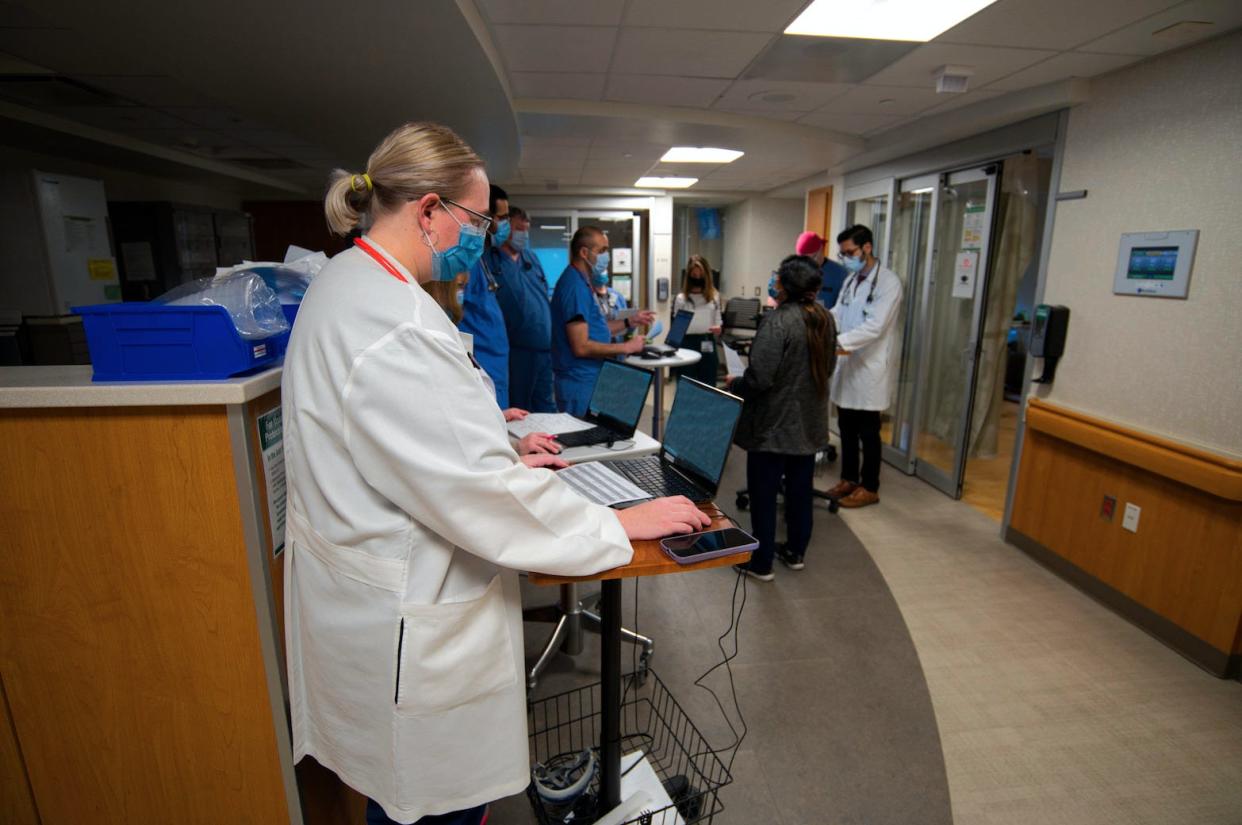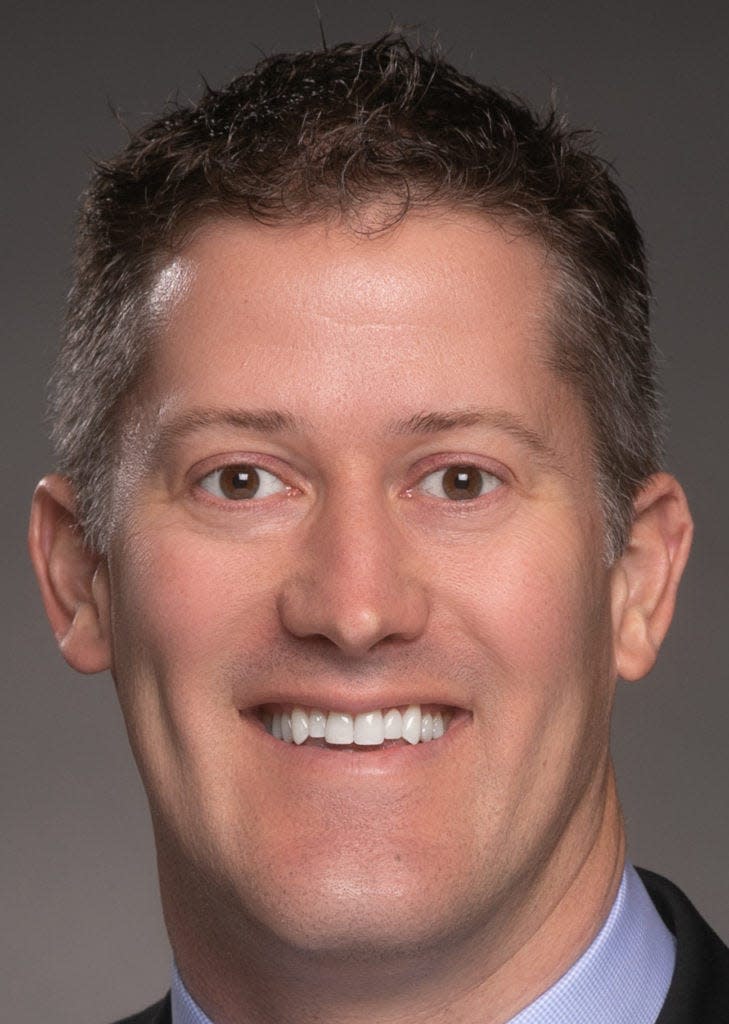New, more contagious COVID-19 variant raising concerns in South Dakota

- Oops!Something went wrong.Please try again later.
The emergence of the latest COVID-19 variant, which makes up nearly 80% of new cases nationally, is raising additional health concerns due to its ability to infect people even if they are vaccinated or have had a prior infection, and health officials are increasingly recommending precautions such as masking indoors and staying up to date on booster shots.
More: 24/7 Sobriety program developed in South Dakota could be rolled out nationwide
But those concerns are not likely to sway South Dakota government, health care and school officials to move away from an official stance of “living with the virus” rather than pursuing active interventions this fall.
The BA.5 variant, first detected in the United States at the end of April, is a sub-variant of Omicron with molecular spike mutations that make it more contagious than previous variants. This means high case counts are likely, but that might not necessarily mean a drastic spike in hospitalizations and deaths because vaccines and other forms of immunity, while not impenetrable, can still blunt the impact of infection.
COVID-19 virus evolving as expected
“The good news is that the virus is evolving the way that we expect viruses to evolve,” said Dr. Jeremy Cauwels, chief physician at Sanford Health in Sioux Falls. “They get better at spreading and they get worse at killing their host.”
As of July 27, the South Dakota Department of Health reported 4,390 active cases, up from 4,176 the previous week. State data shows 56 of 66 counties as having high community spread, defined as 100 cases or greater per 100,000 or a 10% or greater PCR test positivity rate. The overall state positivity rate over the seven-day period leading up to July 27 was 23.9%.
More: Inflation putting most pain on South Dakotans who make the least
State Epidemiologist Josh Clayton told News Watch, in response to written questions, that the state will continue its policy of weekly rather than daily COVID-19 data updates, a practice that began in March. He added that the DOH monitors hospitalization rates to determine the level of threat from the virus. There were 82 people hospitalized with COVID-19, according to DOH data, down slightly from 86 the week of July 20. The state reported nine new deaths of people with COVID-19 during the week leading up to July 27, bringing the total during the pandemic to 2,956.
“The number of people currently hospitalized is still far below the peak of 423 during the Omicron variant wave in early 2022 and the 607 during the initial wave in November 2020,” said Clayton.
Not dismissing potential threat of BA.5 variant
But he made it clear he is not dismissing the potential threat of BA.5, which infected President Joe Biden recently and features symptoms similar to previous variants, including congestion, headaches, cough, fever and fatigue. The CDC has also studied and cited the potential for some individuals to suffer from “long COVID,” post-infection conditions that can include “a wide range of ongoing health problems that last weeks, months, or years.”
More: High gas prices not expected to slow down South Dakota tourism industry in 2022
“Each new variant means the virus has an opportunity to further evade the community-wide immunity that has developed (through vaccination or previous infection),” according to Clayton. “The BA.5 subvariant appears to better evade the human immune response, which will likely result in more COVID-19 infections. This is because people will have a harder time fighting off the virus, even though they have been infected or vaccinated. The BA.5 variant may also result in more people becoming hospitalized or dying if they become infected with COVID-19.”
Kevin Post, chief medical officer for Avera Health, said the hospital system constantly monitors its ability to serve the community during the ebbs and flows of a pandemic, which means having enough medical personnel in position to help those in need.

“Access to health care is a key measurement,” said Post. “Some of that will be hospitalization rates of COVID itself, but a complicating factor is the workforce shortage in health care, like we’re seeing everywhere else, and how that affects access to hospital beds. It all comes back to capacity.”
COVID-19 vaccines still seen as important
South Dakota’s rate of fully vaccinated residents is 63.2%, below the national average of 67.7%. Among those fully vaccinated, only 43.3% have received a booster shot, which ranks 39th among all states, according to CDC data. That puts the state behind CDC recommendations that anyone 50 and older (12 and older for those immunocompromised) should get a “second booster dose at least 4 months after their first.”
Post said that when someone gets vaccinated or has an active infection, there are three to four months when that individual has “active circulating antibodies” that work quickly to respond to exposure (with some mem[ory immunity as well). As the antibodies wane, he said, boosters become crucial to provide protection against severe illness – a message that doesn’t always cut through political posturing on the topic of vaccines.
“I do think there’s a responsibility for health systems to continue to be the voice of what is up to date on unbiased research to provide trusted medical information to patients,” said Post, who has worked as a family and emergency physician. “We live in a world, and not just South Dakota, where there is so much information and misinformation, I do think it’s up to health organizations to be that trusted resource when it’s difficult at times to know who you can trust.”
More: Churches in South Dakota, nationwide dealing with lower attendance, affiliation numbers
Clayton, the state epidemiologist, told News Watch that he agrees with the CDC guidance regarding getting vaccinated and boosted. There are also CDC-approved therapeutics such as the oral antiviral Paxlovid that can be used when prescribed once someone is known to be infected.
“Data available for both South Dakota and nationally have shown that staying up to date with your COVID-19 vaccination reduces the risk of infection, emergency department visits, hospitalization and death for persons of all ages, including young children,” Clayton said.
Prior infection could be a factor with new variant
That message was echoed by Cauwels, who doesn’t dismiss prior infection as a factor but points to unpredictability based on when the infection occurred, how robust the immune response and what variant triggered the illness.

“Our public message remains the same, and that is that a vaccinated person has a lower risk of ending up in the hospital than the same person next to them who is unvaccinated,” said Cauwels. “In individual wellness, if I was just talking to you, or from a population wellness standpoint, if I was talking to all of South Dakota, in both cases I can say that the right answer is to be vaccinated.”
In response to a question from News Watch, a representative of the office of Gov. Kristi Noem wrote: “Gov. Noem supports the recommendations of her Department of Health. Talk to your doctor about if COVID vaccinations and boosters are the right course of action for you and your family.”
This article originally appeared on Aberdeen News: South Dakota COVID-19 case numbers rise with arrival of new variant

